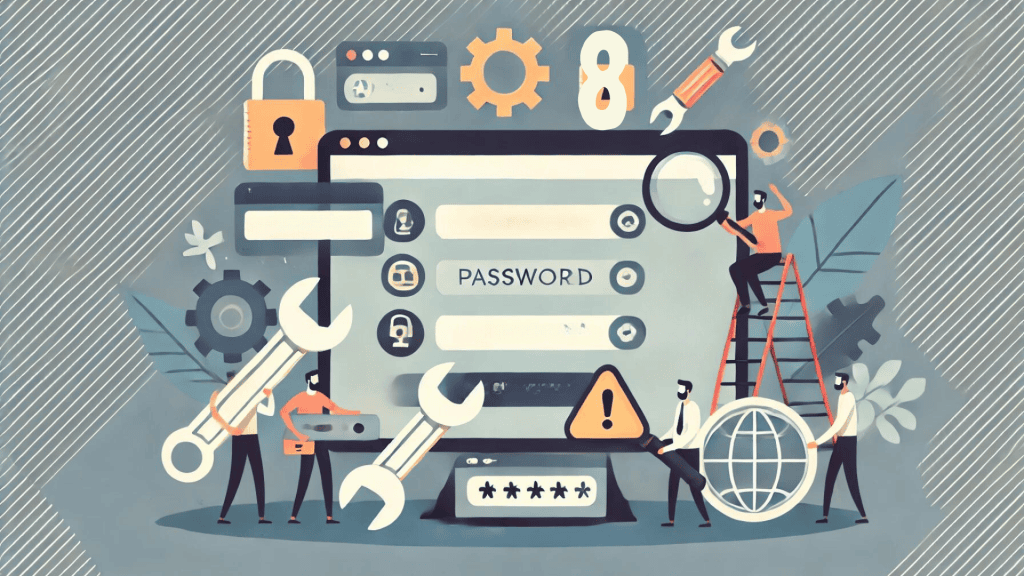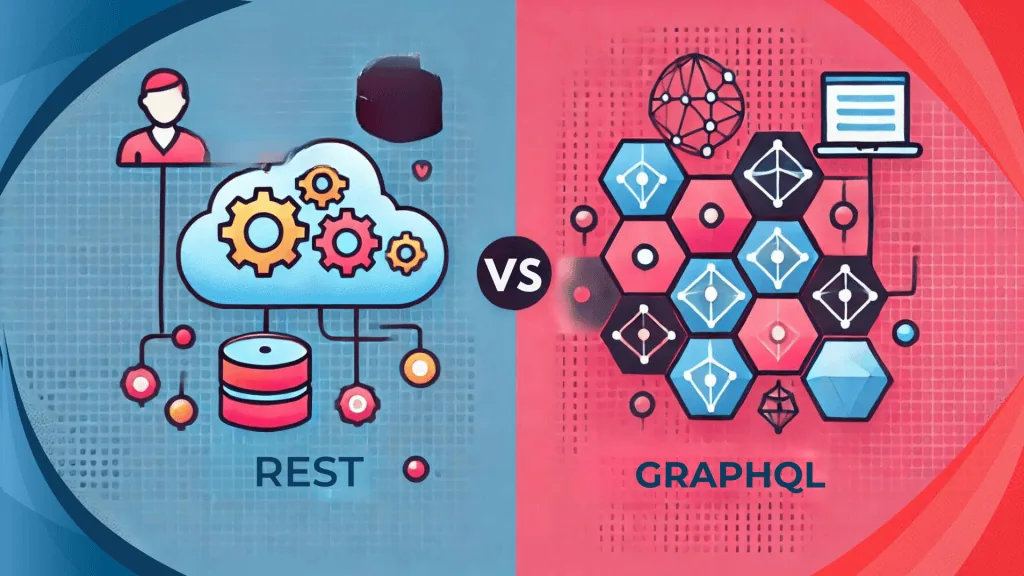Back-End Architecture Basics: Building A Strong Foundation
Reading time: 8 minutes
Table of Contents
- Server, Language, and Framework
- What is a Framework?
- Framework Examples
- Database Management
- SQL vs. NoSQL
- Database Security
- API Layer
- RESTful APIs
- GraphQL
- Middleware
- Authentication Methods
- Identity Authentication
- Hosting and Deployment
- Deployment Strategies
- Continuous Integration and Delivery (CI/CD)
- Understanding Authentication in Back-end Architecture
- Authentication Methods
- Implementing Strong Authentication
- Final Thoughts
Back-end architecture is crucial for creating scalable, efficient, and maintainable web applications. It refers to server-side components that process logic, handle database operations, and manage user authentication among other functionalities. Understanding the back-end architecture basics is essential for any developer looking to build robust web applications. Here’s an introduction to some key concepts.

Server, Language, and Framework
At its core, back-end development involves a server, a server-side language, and a framework. Commonly used languages include JavaScript (Node.js), Python (Django, Flask), Ruby (Ruby on Rails), and Java (Spring Boot). These languages help in building the logic of applications, interacting with databases, and managing user connections. Frameworks are essential tools that provide a structured environment for development. While these technical skills are foundational, it’s also helpful to understand SEO basics for beginners to ensure the applications you build are easily found online. Understanding what is a framework is crucial as it helps streamline coding tasks and promotes best practices.s.
What is a Framework?
A framework, in the context of web development, is a collection of pre-written code that developers can use to manage common tasks and functions. This includes routing, middleware, and database interactions, which are part of back-end architecture basics. Knowing what does framework mean is fundamental to leveraging these tools effectively. Frameworks allow developers to focus on writing business logic rather than reinventing the wheel for common functionalities. For instance, Elementor Django, a popular web framework for Python, includes built-in components for user authentication, form handling, and database management.
Framework Examples
Different backend frameworks have distinct advantages and are suited to various types of projects. For example, Node.js is renowned for its non-blocking, event-driven architecture, making it ideal for real-time applications like chat services and online gaming. Django, on the other hand, follows the “batteries-included” philosophy, providing everything you need out of the box for rapid development.

Database Management
Data storage is a fundamental aspect of back-end architecture. SQL databases like MySQL, PostgreSQL, and Oracle are used for structured data, whereas NoSQL databases like MongoDB and Cassandra are favored for their flexibility with unstructured data. Effective database management ensures that data is secure, consistent, and efficiently accessible.
SQL vs. NoSQL
Understanding the difference between SQL and NoSQL databases is crucial for making informed decisions about data storage. SQL databases are relational and use structured query language (SQL) for defining and manipulating data. They are best suited for complex queries and transactions. NoSQL databases, however, are more flexible in their data models and are designed to scale out by distributing data across multiple servers.
Database Security
Security is a paramount concern when managing databases. Ensuring that only authenticated users can access sensitive data involves implementing robust identity authentication measures. Methods such as role-based access control (RBAC) and encryption help protect data from unauthorized access and breaches.

API Layer
Application Programming Interfaces (APIs) are critical for communication between the front-end and back-end. RESTful APIs are the most common, allowing the front-end to perform CRUD operations (create, read, update, delete) through HTTP requests. GraphQL is another popular API technology that enables clients to request exactly the data they need.
RESTful APIs
APIs not only enable seamless communication between systems but also influence how users experience your platform. A responsive, well-structured backend—combined with a clear API strategy—contributes directly to user satisfaction. This technical consistency lays the groundwork for building brand loyalty online effectively, especially in competitive digital markets where trust and experience drive repeat engagement.
GraphQL
GraphQL, developed by Facebook, provides a more efficient and flexible alternative to REST. With GraphQL, clients can specify the structure of the response, allowing them to request only the data they need. This reduces the amount of data transferred over the network and can lead to performance improvements.

Middleware
Middleware is software that connects network-based requests generated by a client to the back-end data that the client is requesting. It plays a crucial role in authentication, logging, and handling requests, thereby making the server architecture cleaner and more modular.
Authentication Methods
Middleware often handles various authentication methods to ensure secure access to the application. Common methods include token-based authentication, OAuth, and JWT (JSON Web Token). Strong authentication practices are vital for protecting user data and maintaining the integrity of the application.
Identity Authentication
Identity authentication ensures that the user is who they claim to be. This can involve multi-factor authentication (MFA), which combines two or more authentication factors: something the user knows (password), something the user has (security token), and something the user is (biometric verification). For instance, integrating phone password ideas and Elementor biometrics can significantly enhance security.
Hosting and Deployment
Understanding where and how to deploy back-end applications is vital. Services like AWS, Google Cloud, and Azure offer cloud-based solutions that scale with the application’s demand. These platforms provide various tools and services for deploying, managing, and scaling web applications efficiently.
Deployment Strategies
Different deployment strategies include continuous deployment, blue-green deployment, and canary releases. Continuous deployment involves automatically deploying every change that passes automated tests to production. Blue-green deployment reduces downtime and risk by running two identical production environments, only one of which serves live production traffic at a time. Canary releases involve gradually rolling out changes to a small subset of users before a full deployment. Understanding these strategies is crucial when delving into back-end architecture basics.
Continuous Integration and Delivery (CI/CD)
CI/CD pipelines are essential for modern development workflows, ensuring that code changes are automatically tested and deployed. Tools like Jenkins, Travis CI, and CircleCI help automate these processes, allowing for more frequent and reliable updates to applications.

Understanding Authentication in Back-end Architecture
Authentication is a critical aspect of back-end architecture, ensuring that only authorized users can access certain resources. Various authentication methods are implemented to secure applications, making it essential to understand user authentication.
Authentication Methods
There are several authentication methods, each with its strengths and applications. These include:
- Password-based Authentication: The most common method, where users authenticate by providing a username and password. It’s crucial to enforce strong password policies to enhance security.
- Multi-Factor Authentication (MFA): Combines two or more independent credentials: what the user knows (password), what the user has (a security token), and what the user is (biometric verification). MFA significantly increases security by adding additional layers of protection.
- Token-based Authentication: Involves issuing a token that a user must provide to access resources. Examples include JWT and OAuth tokens.
- Biometric Authentication: Uses unique biological traits like fingerprints or facial recognition to verify identity. This method is increasingly popular due to its high security and convenience.
Implementing Strong Authentication
Strong authentication practices are vital for protecting user data. This includes enforcing complex password requirements, using MFA, and regularly updating authentication protocols. Identity authentication should also involve regular audits and monitoring to detect and respond to any unauthorized access attempts.

Final Thoughts
Developing a robust back-end architecture requires a strong grasp of these components and how they interact. Whether you are building simple applications or complex systems, these back-end architecture basics provide the groundwork for developing powerful and efficient back-end services. Understanding web development frameworks, database management, APIs, middleware, and deployment strategies will enable you to create scalable, maintainable, and secure applications.
Web development frameworks play a pivotal role in simplifying and streamlining the development process. Knowing what is a framework, what is web application, and the significance of identity authentication ensures a holistic approach to backend development. By mastering these elements, developers can build sophisticated web applications that meet the needs of modern users. Integrating tools like Elementor can further enhance the development process by providing a user-friendly interface for building and managing web content. Discover how Owltek Solutions can transform your online presence with their cutting-edge web development services!
**This post contains affiliate links, meaning I may earn a small commission if you make a purchase through one of them. Rest assured, I only recommend products I truly love. Your support helps keep my creative business thriving — thank you!**
